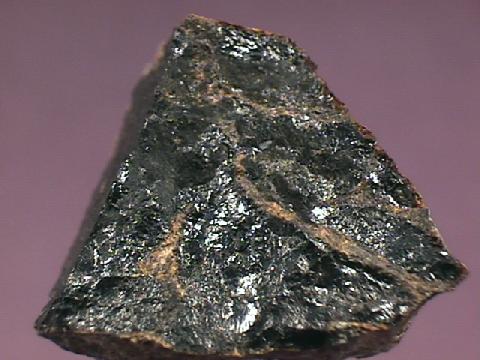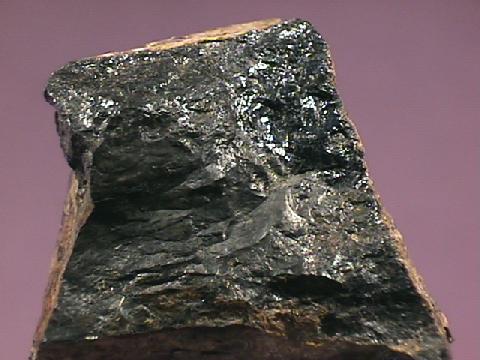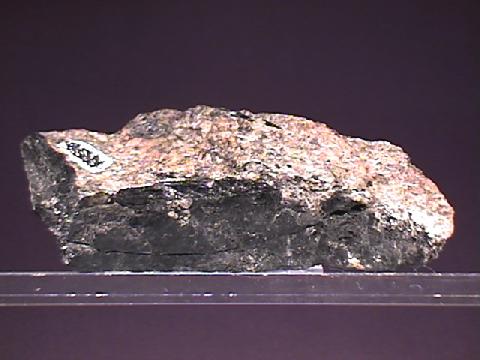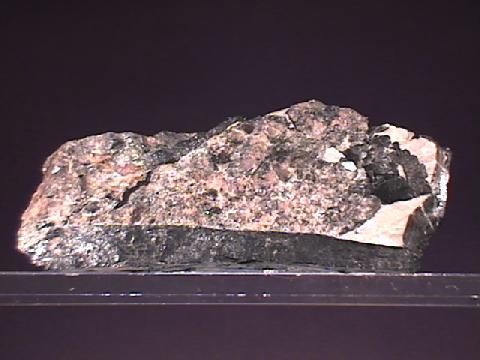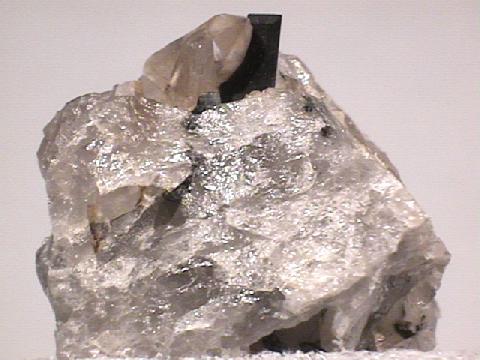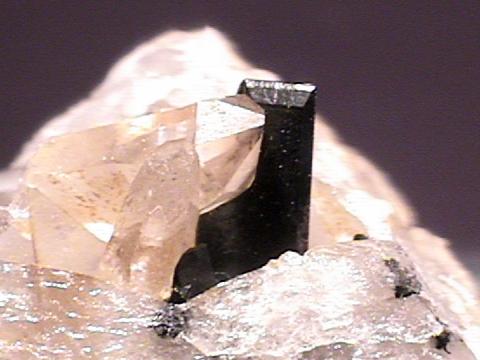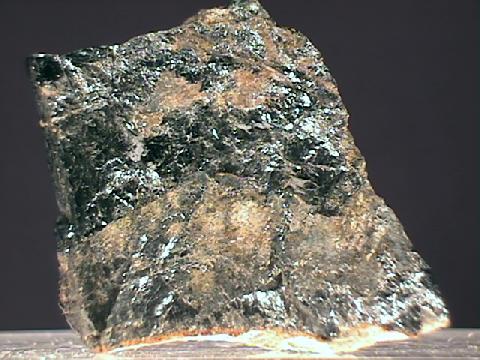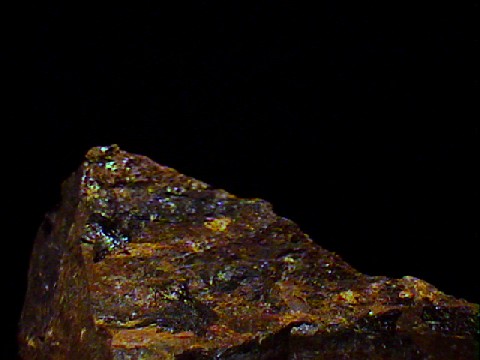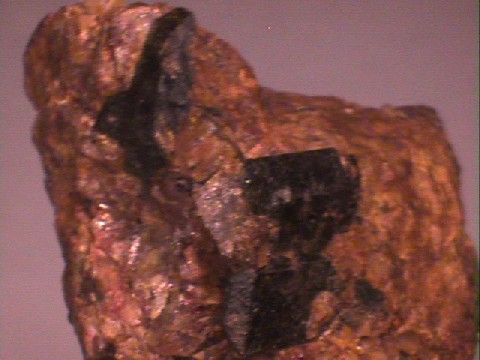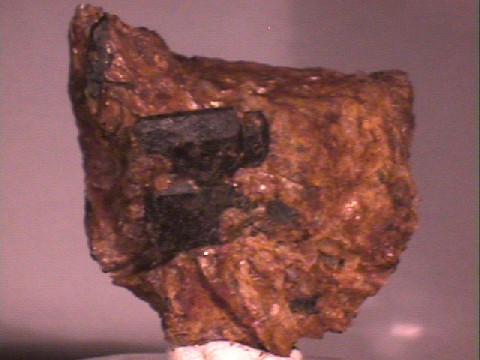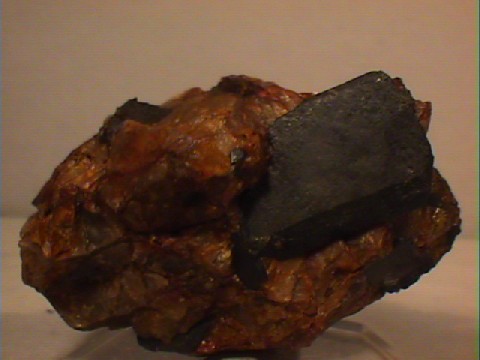 THE MINERAL ALLANITE
THE MINERAL ALLANITE
- Chemistry: (Ca, Ce, La, Y)2(Al, Fe)3(SiO4)3(OH), Calcium Cerium Lanthanum Yttrium Aluminum Iron Silicate Hydroxide.
- Class: Silicates
- Subclass: Sorosilicates
- Group: Epidote
- Uses: As a source of rare earth metals and mineral specimens.
Specimens
Allanite, also known as "orthite" in Europe, is one of the most common rare earth minerals, which is somewhat of an oxymoron. Rare earth elements include many unusual and valuable metals. Up to 20% of allanite's weight could be composed of these rare earth elements, making allanite a potentially valuable ore. Because of these rare earth metals, especially thorium, which are frequently radioactive, allanite is frequently slightly radioactive to no one's great surprise.
The radioactivity, as in other radioactive minerals, can manifest itself in a couple of ways. Embedded crystals of allanite are frequently seen with a "halo" or dark ring; evidence of the radioactive effects on nearby minerals. Allanite can also become metamict. This is a condition found in radioactive minerals and results from the destructive effects of its own radiation on its crystal lattice. The effect can destroy a crystal lattice completely while leaving the outward appearance unchanged. The complete destruction of the allanite structure will produce a glassy hydrated substance. The hydration is facilitated by the metamictation.
If just most of the elements that can be found in allanite were shown, then the formula would be written as (Ca, Ce, Y, La, Th, Na, K)2(Al, Fe, Be, Mn, Mg)3(SiO4)3(OH), or Calcium Cerium Yttrium lanthanum Thorium Sodium Potassium Aluminum Iron Beryllium Manganese Magnesium Silicate Hydroxide. A mineral like allanite is sometimes referred to as a "trash can mineral" because it can possess elements that other minerals just seem to not want (i.e. the "trash") or is it because it can attract every stray element like a trash can attracts stray cats. whatever the case, the shorter formula version is used here and is more indicative of its general chemistry but does not reflect the broad chemical possibilities that allanite can produce.
Allanite in the strictest sense is broken into three officially recognized minerals:
- Allanite-(Ce) the cerium rich allanite, also the most common and in general the one most often referred to as just allanite or orthite.
- Allanite-(La) the lanthanum rich allanite.
- Allanite-(Y) the yttrium rich allanite.
These minerals share the same structures and vary slightly in only a few of their properties. Chemical test would be required to differentiate them.
Allanite, like other Epidote Group minerals, has some structural complexity in that it has both single silicate tetrahedrons, SiO4, and double silicate tetrahedrons, Si2O7. The formula of allanite could be expressed in a such a way so as to reflect this organization; (Ca, Ce, La, Y)2(Al, Fe)Al2O(SiO4)(Si2O7)(OH). The Al2O group represents the parallel chains of AlO6 and AlO4(OH)2 octahedra that are the heart of the Epidote Group structure. The silicate groups and extra ions connect the chains together. Since the chains are parallel, the crystals tend to be prismatic. The chains are arranged in parallel planes and allanite's cleavage breaks the bonds between these planes.
Allanite is found as an accessory mineral in several igneous rocks such as granites, syenites, diorites and their pegmatites and in a few metamorphic rocks as small embedded grains. It forms tabular crystals that can have excellent form and character. Remember, this is a slightly radioactive mineral and should be stored away from other minerals that are subject to damage from radioactivity and of course human exposure should be limited !
PHYSICAL CHARACTERISTICS:
- Color is commonly black but can be brown to brownish violet if translucent.
- Luster is vitreous to greasy.
- Transparency: Crystals are commonly opaque but can be found translucent.
- Crystal System: Monoclinic; 2/m
- Crystal Habits include long, somewhat prismatic or tabular crystals with a typically dominant pinacoid that the crystal is often flattened against. The terminations are usually wedge shaped, more rarely tapered pyramids. Also massive or as is most commonly the case, as embedded grains.
- Cleavage poor in one direction, lengthwise.
- Fracture is conchoidal.
- Hardness is 5.5
- Specific Gravity is 3.0 - 4.2
- Streak is black.
- Other Characteristics: Twinning may be seen as parallel grooves and allanite has slight radioactivity.
- Associated Minerals include quartz, feldspars, biotite, thorite, xenotime, monazite and epidote
- Notable Occurrences are widespread and include the Ural Mountains of Russia; Falun, Ytterby and Sheppsholm, Sweden; Trimouns, France; Madagascar; the Eifel District of Germany; Spain; Otter Lake, Quebec and Madawaska, Ontario, Canada and Amelia Court House, Virginia; Barringer Hill, Texas; California; Franklin, New Jersey; Edenville and even New York, New York and New Mexico, USA.
- Best Field Indicators are crystal habit, color, radioactivity, luster and hardness.

